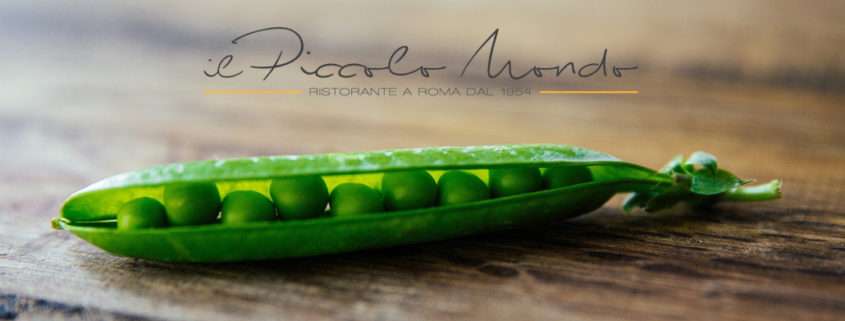The peas belong to the family of legumes, the same as beans, chickpeas, lentils, broad beans, etc., all provided with pods. http://www.treccani.it/vocabolario/pisello/ They originate from the East and since the middle of the eighteenth century they have also been cultivated in the Mediterranean. There are various subspecies including the common pea or vegetable garden pea, with smooth or wrinkled whitish, yellow or green seeds, and the wild pea, which is found in the woods and has two-tone flowers. The plant is 30 centimetres to 3 meters high and for this reason, as well as for the morphology, we can distinguish some variants such as the dwarf peas, climbing and climbing seeds. Inside the pod there are seeds, in different number and shape depending on the species. Those on the market are smooth and green, but there are also wrinkled ones, with a different content of carbohydrates. The appearance of these seeds depends on the starch content, which in smooth seeds is prevalent, while in the wrinkled quality is accompanied by soluble sugars, which make the seeds very sweet. Some varieties are consumed with the pod, when the seeds inside are still very small, and are called mangetout peas.
Nutritional Features
The fresh peas are available in May and June, but can be consumed throughout the year in cans, frozen or dried. From a nutritional point of view, they are an excellent source of cholesterol-free proteins which, together with wholegrain cereals, represent an excellent alternative to animal proteins; they are also rich in water and contain up to 80% of them. Very high is the amount of folic acid, which has beneficial properties on the cardiovascular system, carbohydrates, are indeed a good source of energy with 70/80 Kcal per 100 grams, and fiber. Vitamins A, B and C, mineral salts such as iron, potassium, magnesium and calcium are abundant.
How to cook them
The peas, having a sweet and delicate taste, are great to be used for the preparation of various dishes. Stewed with smoked bacon or ham, they are suitable as a side dish or to dress fusilli, with the addition of cream, or to prepare tasty risottos. Cooking is simple: it is necessary to brown the chopped onion with the bacon in oil and then add the peas keeping the heat low. When the peas have blanched, add salt and a ladle of hot water and cover the pot. Continue cooking over low heat, adding hot water from time to time, until the peas are cooked. At this point, adjust the salt, then add black pepper and nutmeg. This is just one of the recipes, as the ingredients may vary slightly from region to region. The traditional Venetian recipe for risotto, for example, includes: rice, peas, onion, lard, olive oil, vegetable broth and a knob of butter to stir.
Being very versatile, they can be combined with both meat and fish. For example, cuttlefish with peas are excellent. They can also be used to prepare stuffed salted muffins as an appetizer. Tasty and appetizing, they have as ingredients: peas, milk, evo oil, seed oil, cooked ham, eggs, pecorino black pepper, flour, parsley, yeast and salt.
Fresh and nutritious are the asparagus and peas salads, seasoned with oil and salt. And again: mashed potatoes, peas and mint, or spring velvety with vegetable cream, fresh peas, basil, shallots and vegetable broth.
Good to eat in all seasons, peas as well as being tasty are a panacea for your health!



